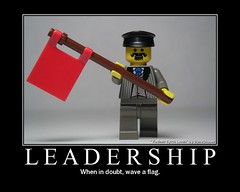Presenter: Geoffrey Bilder, CrossRef
The title is in reference to a book that is geared towards preparing for looking for a new job or changing careers, which is relevant to what the serials world is facing, both personnel and content. Paratext is added content that prepares the audience/reader for the meat of the document. We are very good at controlling and evaluating credibility, which is important with conveying information via paratext.
The internet is fraught with false information, which undermines credibility. The publisher’s value is being questioned because so much of their work can be done online at little or no cost, and what can’t be done cheaply is being questioned. Branding is increasingly being hidden by layers like Google which provide content without indicating the source. The librarian’s problem is similar to the publisher’s. Our value is being questioned when the digital world is capable of managing some of our work through distributed organizational structures.
“Internet Trust Anti-Pattern” — a system starts out as being a self-selected core of users with an understanding of trust, but as it grows, that can break down unless there is a structure or pervasive culture that maintains the trust and authority.
Local trust is that which is achieved through personal acquaintance and is sometimes transitive. Global trust extends through proxy, which transitively extends trust to “strangers.” Local is limited and hard to expand, and global increases systemic risk.
Horizontal trust occurs among equals with little possibility of coercion. Vertical trust occurs within a hierarchy, and coercion can be used to enforce behavior, which could lead to abuse.
Internet trust is in the local and horizontal quadrant. Scholarly trust falls in the vertical and global quadrant. It’s no wonder we’re having trouble figuring out how to do scholarship online!
Researchers have more to read and less time to read it, and it’s increasing rapidly. We need to remember that authors and readers are the same people. The amazing ways that technology has opened up communication is also causing the overload. We need something to help identify credible information.
Dorothea Salo wrote that for people who put a lot of credibility in authoritative information, we don’t do a very good job of identifying it. She blames librarians, but publishers have a responsibility, too. Heuristics are important in knowing who the intended audience is meant to be.
If you find a book at a bargain store, the implication is that it is going to be substantially less authoritative than a book from a grand, old library. (There are commercial entities selling leather bound books by the yard for buyers to use to add gravitas to their offices and personal libraries.) Scholarly journals are dull and magazines are flashy & bright. Books are traditionally organized with all sorts of content that tells academics whether or not they need to read them (table of contents, index, blurbs, preface, bibliography, etc.).
If you were to black out the text of a scholarly document, you would still be able to identify the parts displayed. You can’t do that very well with a webpage.
When we evaluate online content, we look at things like the structure of the URL and where it is linked from. In the print world, citations and footnotes were essential clues to following conversations between scholars. Linking can do that now, but the convention is still more formal. Logos can also tell us whether or not to put trust in content.
Back in the day, authors were linked to printers, but that lead to credibility problems, so publishers stepped in. Authors and readers could trust that the content was accurate and properly presented. Now it’s not just publishers — titles have become brands. A journal reputation is almost more important than who is publishing it.
How do we help people learn and understand the heuristics in identifying scholarly information? The processes for putting out credible information is partially hidden — the reader or librarian doesn’t know or see the steps involved. We used to not want to know, but now we do, particularly since it allows us to differentiate between the good players and the bad players.
The idea of the final version of a document needs to be buried. Even in the print world (with errata and addenda) we were deluding ourselves in thinking that any document was truly finished.
Why don’t we have a peer reviewed logo? Why don’t we have something that assures the reader that the document is credible? Peer review isn’t necessarily perfect or the only way.
How about a Version of Record record? Show us what was done to a document to get it to where it is now. For example, look at Creative Commons. They have a logo that indicates something about the process of creating the document which leads to machine-readable coding. How about a CrossMark that indicates what a publisher has done with a document, much like what a CC logo will lead to?
Knowmore.org created a Firefox plugin to monitor content and provides icons that flags companies and websites for different reasons. Oncode is a way of identifying organizations that have signed a code of conduct. We could do this for scholarly content.
Tim Berners Lee is actively advocating for ways to overlay trust measures on the internet. It was originally designed by academics who didn’t need it, but like the internet anti-trust pattern, the “unwashed masses” have corrupted that trust.
What can librarians and publishers do to recreate the heuristics that have been effective in print? We are still making facsimiles of print in electronic format. How are we going to create the tools that will help people evaluate digital information?

